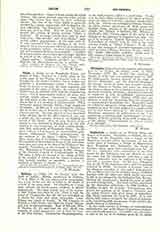

Selge, a titular see in Pamphylia Prima, suffragan of Side. Situated in a fertile plain on the south slope of the Taurus, it boasted that it was founded by the diviner Calchas, but in reality was probably a Lacedmmonian colony. Although difficult of access, it became the most populous and powerful of the cities of Pisidia. Its army of 2000 soldiers was in constant strife with the neighboring cities. Greek grammarians connect its name with aselges, which means “licentious”; some think the first letter of the word a negative particle, but others find in it a meaning of reinforcement. When Alexander passed through Pisidia, Selge sought his friendship. In 208 B.C. it was besieged by Achaeus, ally of its rival city of Pednelissus, and forced to pay a heavy war tax. Its coins show it to have flourished under Trajan, but in the fifth century it was only a small city, still capable, however, of repulsing an attack of the Goths. After the new division of the empire it was included in Pamphylia; in the fifth century it was connected, at least ecclesiastically, with Side, metropolis of Pamphylia Prima. In the ninth century it had become an autocephalous archdiocese. Subsequent “Notitiae episcopatuum” do not mention it. Le Quien (“Oriens Christ.”, I, 1011) names four of its bishops: Uranion, who must have assisted at the Council of Nicava in 325, but whose name does not occur in the lists of the Fathers of that council; Nunechius, at the Council of Ephesus in 431; Marcianus at Constantinople in 869; Gregory at the Photian Council of Constantinople in 879. The ruins of Selge are located at the village of Sark in the sandjak of Adalia and the vilayet of Koniah; they include temples, an aqueduct, a portico, a stadium, a theatre, a church, etc.
S. PETRIDES

